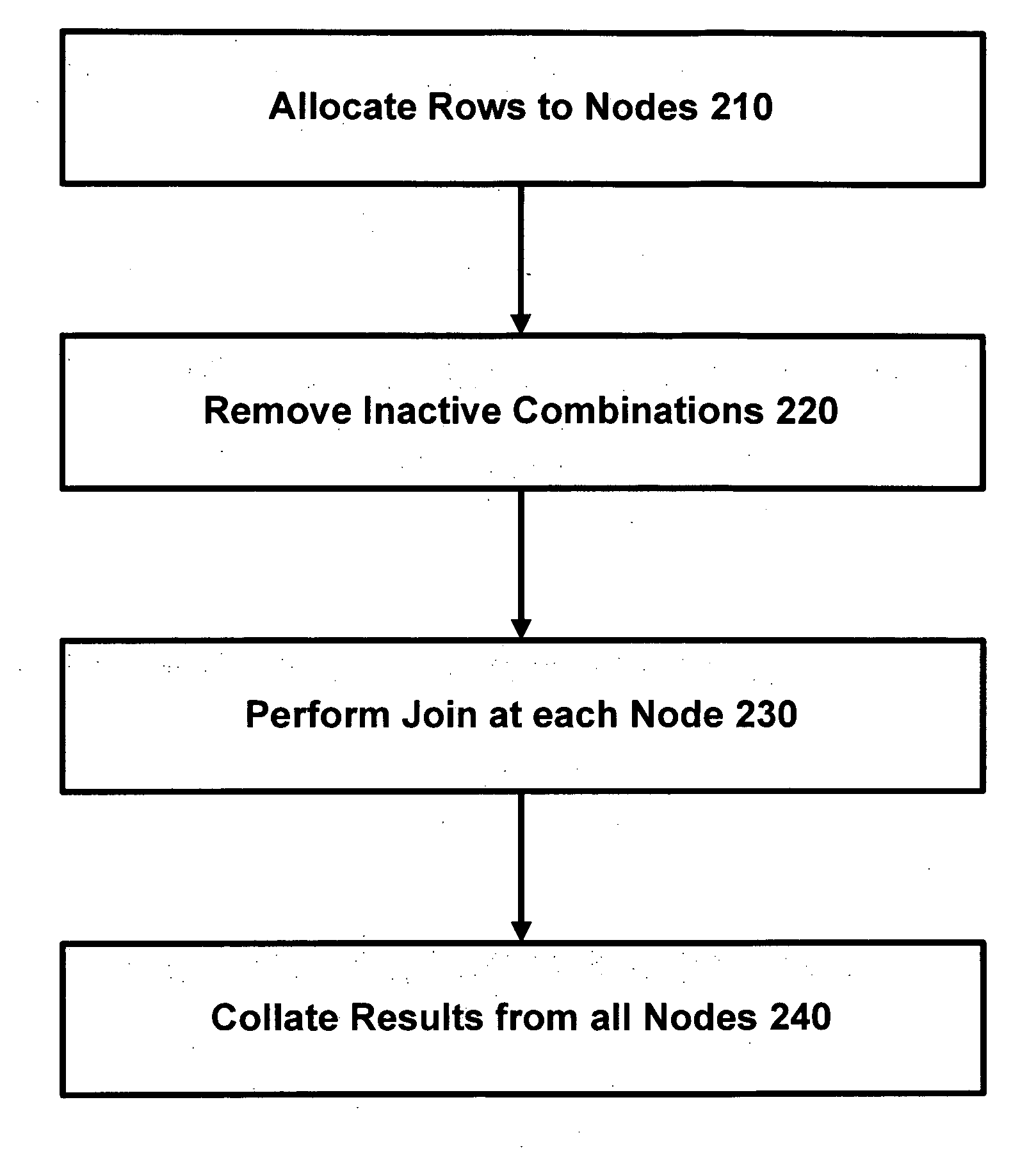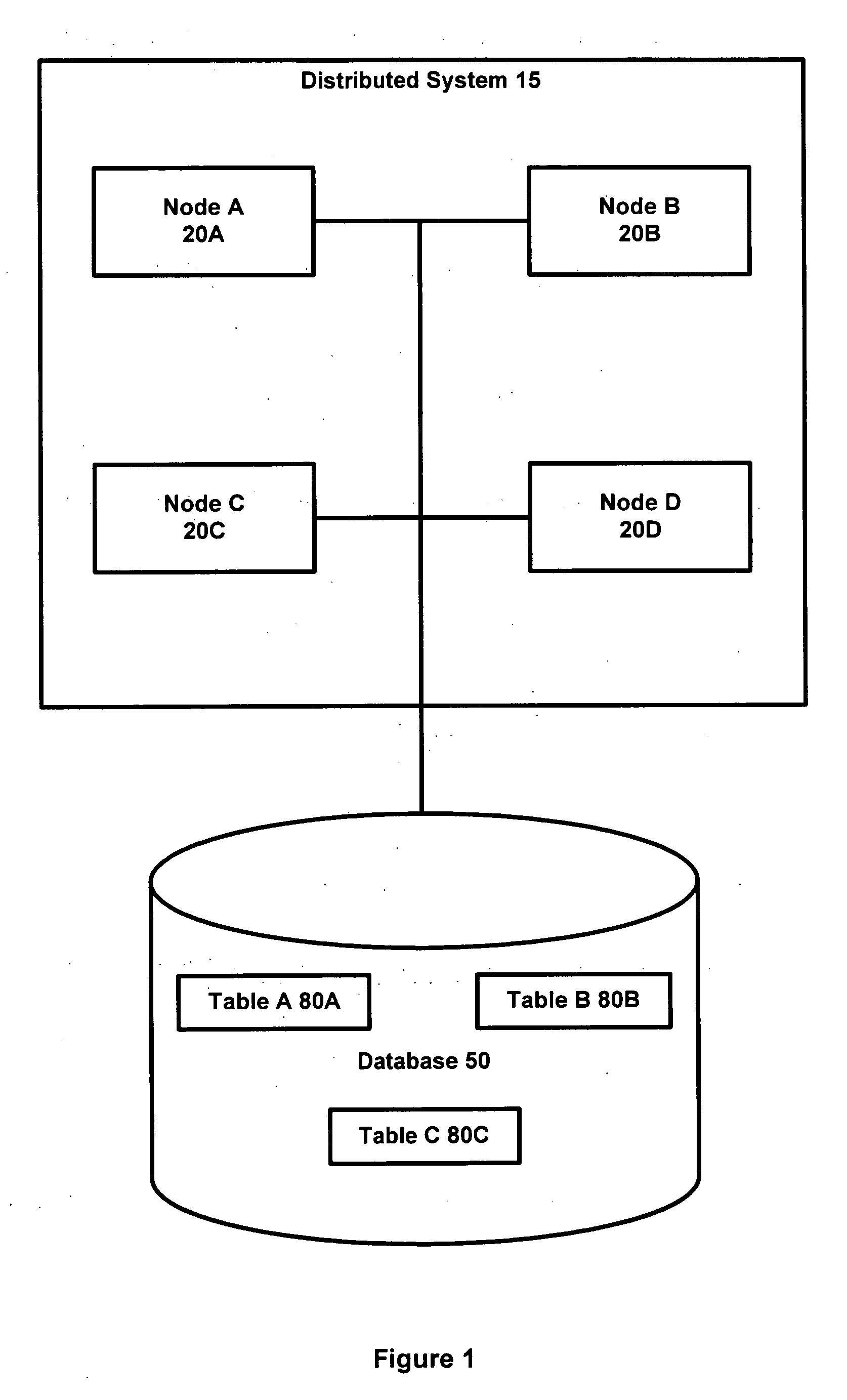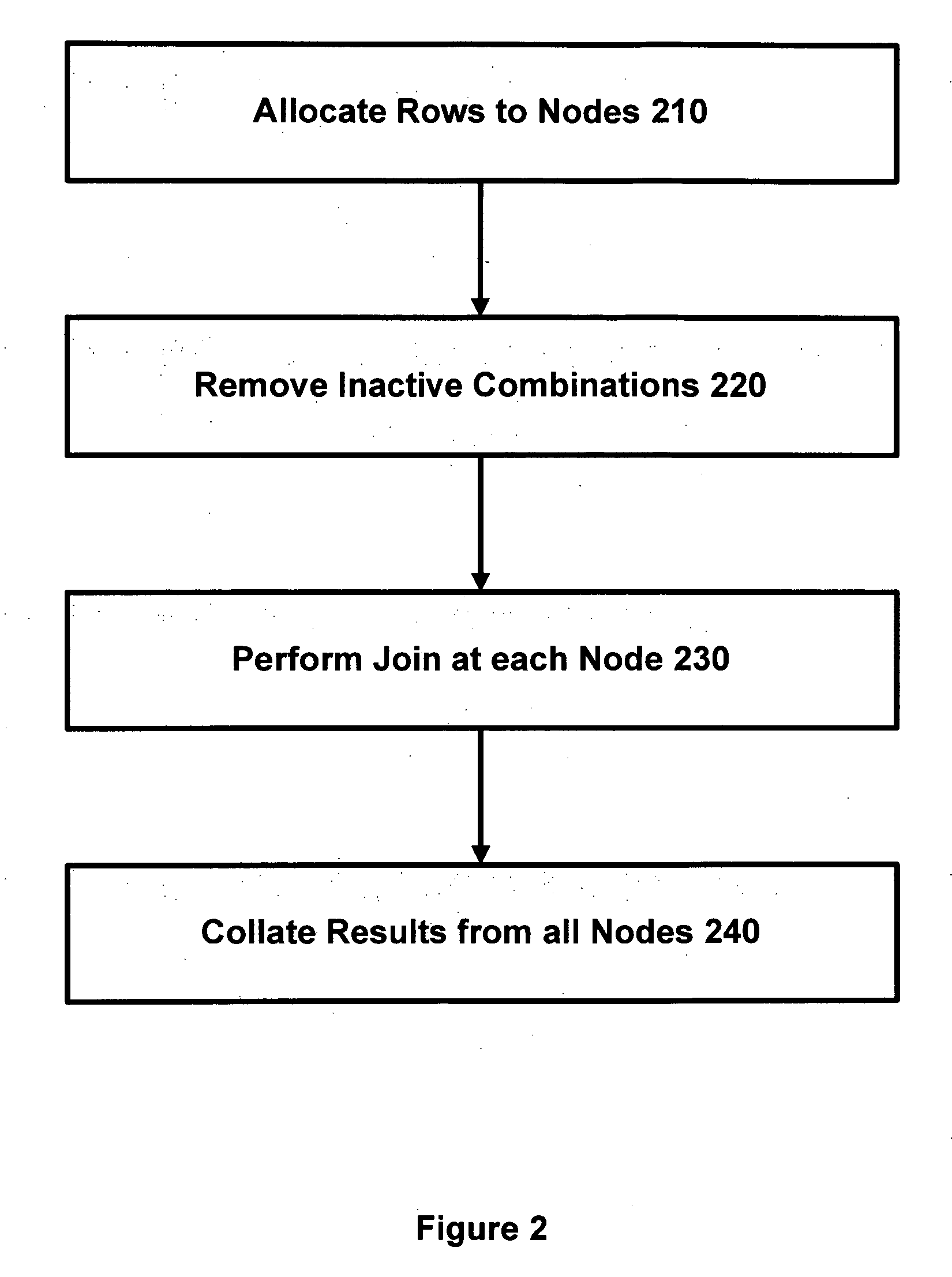Database system with multiple processing nodes
a database system and processing node technology, applied in the field of database system database operations, can solve the problems of inability to achieve the same data, so as to reduce time and space requirements, the effect of less spa
- Summary
- Abstract
- Description
- Claims
- Application Information
AI Technical Summary
Benefits of technology
Problems solved by technology
Method used
Image
Examples
Embodiment Construction
[0038] In accordance with one embodiment of the invention, we define two new distributions, horizontal-p and vertical-p, where p may be chosen according to the relative sizes of table A and table B, and generally 1≦p≦√n. In one implementation, p=√(n|A| / |B|) (for reasons that are explained below) but other values for p may be used if more convenient. For example, a different value for p might be used to allow p to divide n exactly, or to match the distribution of an existing table, or if the rows of A and B have very different sizes (as explained in more detail below). Note that table A and B may each be too large to fit into the memory of a single node.
[0039] A value of q is chosen such that q=int(n / p). The first pq nodes are then labelled as:
N11,N12, . . . ,N1p,
N21,N22, . . . ,N2p,
. . .
. . .
Nq1,Nq2, . . . ,Nqp
The remaining r=n mod p (
[0040] We define the “horizontal groups” as Hi={Nij|1≦j≦p}, that is, the rows
in the table above,...
PUM
 Login to View More
Login to View More Abstract
Description
Claims
Application Information
 Login to View More
Login to View More - R&D
- Intellectual Property
- Life Sciences
- Materials
- Tech Scout
- Unparalleled Data Quality
- Higher Quality Content
- 60% Fewer Hallucinations
Browse by: Latest US Patents, China's latest patents, Technical Efficacy Thesaurus, Application Domain, Technology Topic, Popular Technical Reports.
© 2025 PatSnap. All rights reserved.Legal|Privacy policy|Modern Slavery Act Transparency Statement|Sitemap|About US| Contact US: help@patsnap.com



